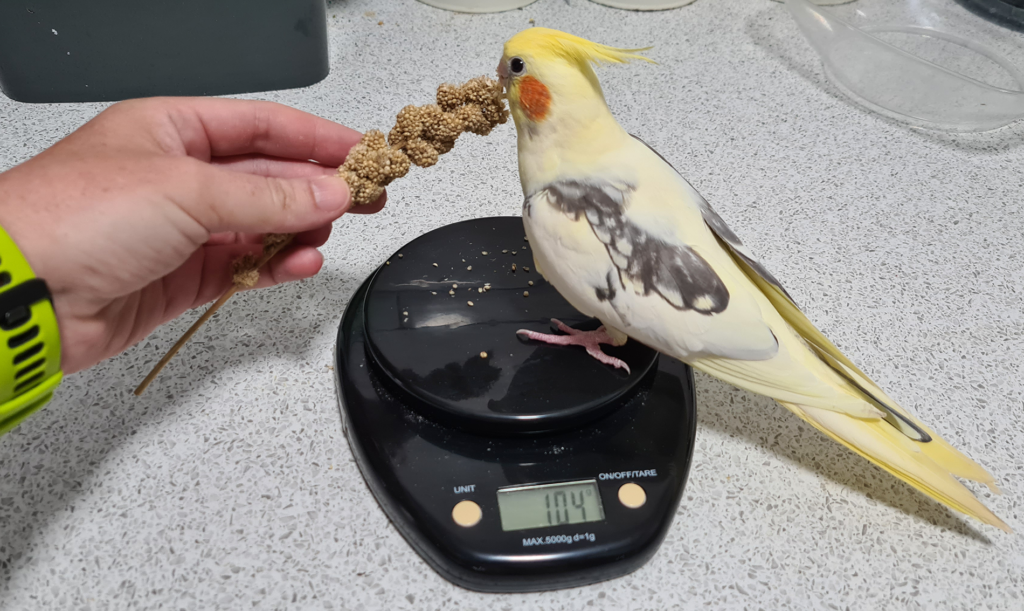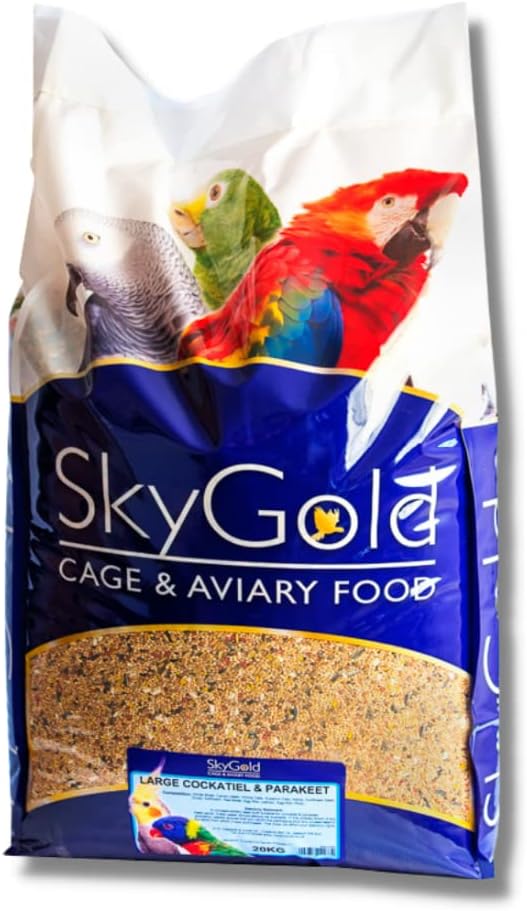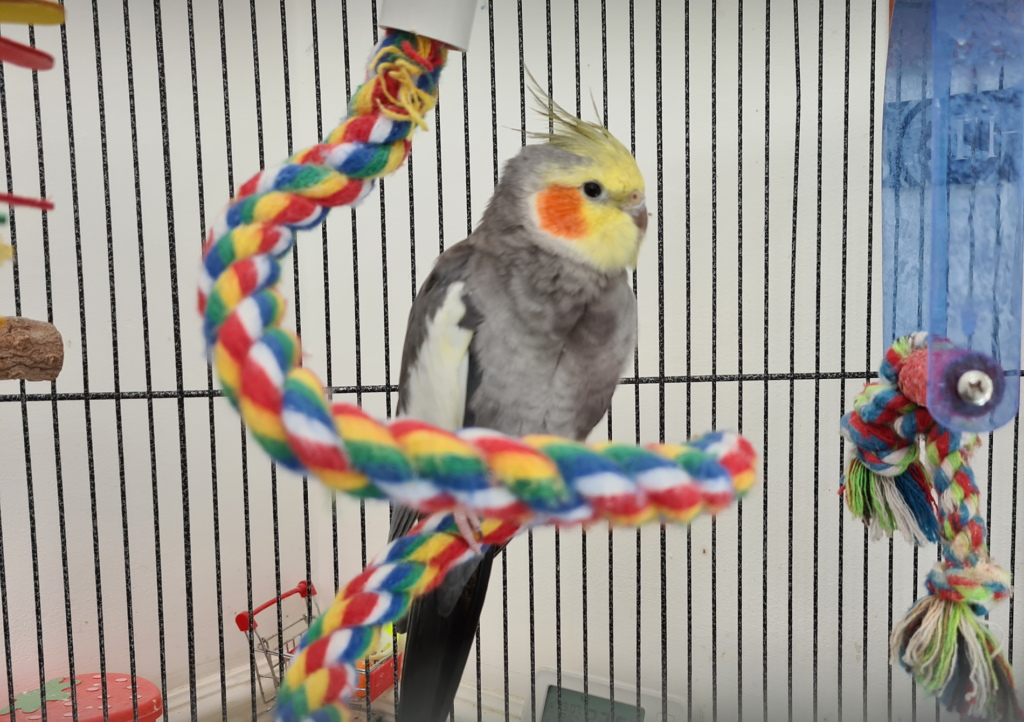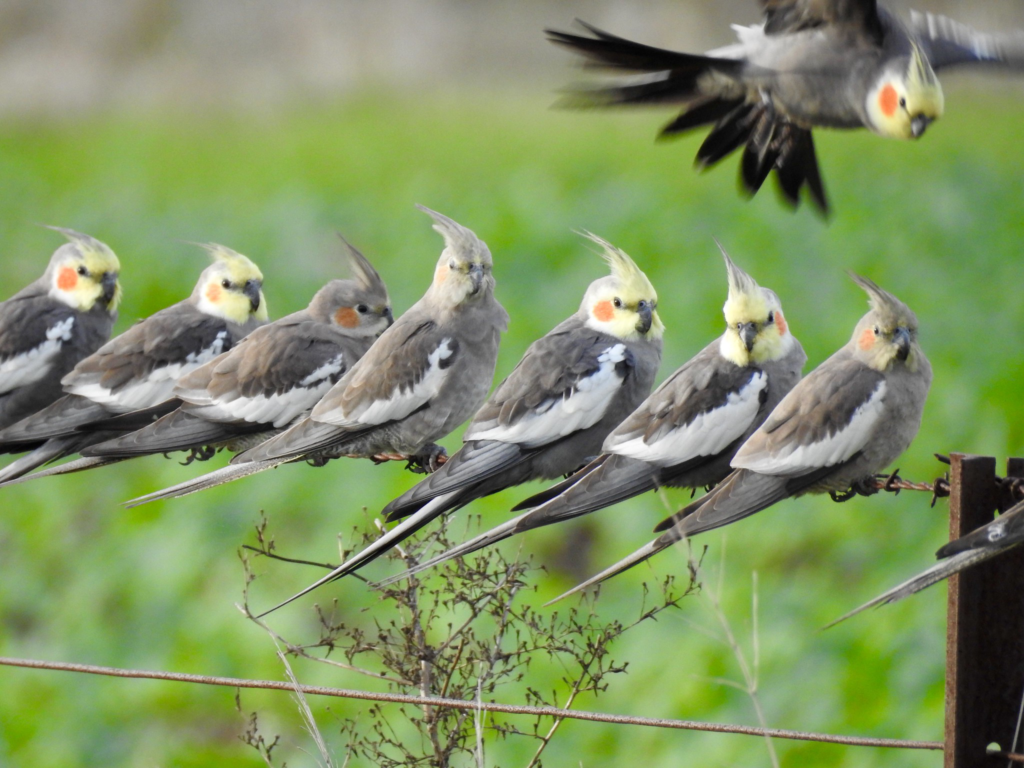Cockatiel Size: A Fascinating Insight
The conversation about “cockatiel size” is surprisingly complex. This charming avian species, native to Australia, varies significantly in size and weight. However, they typically fall within certain recognised parameters.
General Overview of Cockatiel Size
Cockatiels usually measure between 12 to 14 inches (30 to 35 centimetres) from head to tail. This makes them a medium-sized bird in the pet world, and this attribute is one of the many reasons they are beloved pets worldwide. The cockatiel’s size makes it big enough to be charismatic and full of personality, yet small enough to manage and care for in most domestic environments.
Factors Affecting The Size Of Cockatiels
When discussing “cockatiel size”, we must consider the elements that contribute to their growth. Factors such as genetics, diet, environment, and health status play crucial roles in determining a cockatiel’s final size. For example, a well-balanced diet and a stress-free environment can promote healthy growth.
I feed my flock a mix of good seed, pellets and veggies. Here are the seeds and pellet mixes that I feed my cockatiels every day. Along with these, they get fresh veggies. Their favourites include broccoli and kale.
The Weight Factor in Cockatiel Size
A crucial aspect of the cockatiel size discussion is the bird’s weight. Cockatiels typically weigh between 75 to 125 grams, which is approximately the weight of a bar of soap. This lightweight nature is due to their hollow bone structure, an evolutionary feature that enables them to fly.
Cockatiel Size Variation
The average cockatiel size can differ due to several factors. For instance, gender plays a role, with female cockatiels generally being larger than their male counterparts in my experience. It’s important to note, however, that this isn’t a hard-and-fast rule, as exceptions frequently occur. Other influential factors include the bird’s diet, living conditions, and genetics.
Cockatiel Average Weight
Cockatiels typically reach their full size by six months of age. However, their growth is most rapid during their first month. A growth chart provides a bird’s-eye view (pun intended) of the process. Though it’s important to note that individual growth rates may vary due to several factors, including diet, health, and genetics.
| Age | Average Weight |
|---|---|
| Newborn 1-3 days old | 3-5 grams |
| 3-6 days old | 5-12 grams |
| 1-2 weeks old | 12-45 grams |
| 2-3 weeks old | 45-72 grams |
| 4-5 weeks old | 75-80 grams |
| 5-6 weeks old | 80-90 grams |
| 6-7 weeks old | 85-100 grams |
| 7 weeks to adult | 95-120 grams |
Please note that these are average weights, and individual birds may vary depending on factors such as diet, health, and genetic factors. Always consult with a vet for health concerns regarding your pet. It’s important to consult your vet if you notice any sudden weight loss or weight gain, as these indicators could point to health issues.
Cockatiel Size Compared to Other Birds
When discussing “cockatiel size,” a comparative analysis helps put things into perspective. Cockatiels are noticeably larger than budgies, another popular pet bird, which average only 7 inches (17 centimetres) in length. On the other hand, cockatiels are dwarfed by larger parrots like the macaw, which can reach lengths of up to 36 inches (91 centimetres).
To visualise this, imagine standing three average cockatiels on top of each other, and you’ll get roughly the size of one macaw. Meanwhile, it would take approximately two budgies standing head to tail to reach the length of a typical cockatiel. This comparison clearly illustrates where cockatiels stand on the size spectrum of popular pet birds.
Does Size Influence Behavior?
Interestingly, the cockatiel size may also have an impact on their behavior. Due to their moderate size, cockatiels often display a balance between the energy and playfulness of smaller birds and the intelligence and independence of larger parrots. This perfect blend makes them a favourite among bird enthusiasts and pet owners.
Why Size Matters: Choosing the Right Bird for You
When considering bringing a bird into your home, understanding the implications of the cockatiel size is essential. Their compact size makes them ideal for those living in apartments or small homes. Their size also makes them easy to handle and less intimidating for children or those new to bird-keeping.
However, the cockatiel size also dictates other requirements, such as cage size, the amount of food needed, and even the type and size of toys that are appropriate. Therefore, potential cockatiel owners should take all these factors into account before deciding if a cockatiel is the right fit for their lifestyle.
Ideal Diet For Maintaining A Healthy Weight
A balanced diet is paramount for a cockatiel to reach its optimum size and maintain a healthy weight. Include a variety of fruits, vegetables, and high-quality bird pellets in their diet. Seeds can be part of their diet but should not be the main food source, as they can lead to obesity and nutritional deficiencies.
How To Measure Your Cockatiel
Weight
A bird’s weight is the quickest and most straightforward indication of its overall health. You can weigh your cockatiel using a small scale, ideally one designed for small pets. Regular weighing helps to establish a baseline for your bird’s normal weight, making it easier to spot any unusual changes.
Weighing your cockatiel can be difficult if they don’t like to sit still like my lot! I have a simple set of scales and need to bribe my birds to stand on them. A better set like these below would be much better!

Girth or Length Measurement
To measure your cockatiel’s length, start from the tip of its beak and go all the way to the end of its tail feathers. For girth, measure the widest part of the bird’s body, which is usually around the chest area. Be gentle, and use a soft, flexible measuring tape to ensure accuracy without causing discomfort.
Cockatiel Size: A Final Word
In conclusion, the topic of “cockatiel size” is as intriguing as it is significant. From the biggest cockatiel in the world to a comparison with other popular bird species, understanding this feature helps us appreciate the unique charm of these feathery friends. Their size, coupled with their vibrant personality, intelligence, and manageable needs, make cockatiels an excellent choice for bird lovers. Whether you’re an experienced bird owner or a novice looking to take flight in pet bird ownership, a cockatiel might be the perfect size for your home and heart.

Frequently Asked Questions
How Much Do Cockatiels Weigh In Grams?
Adult cockatiels typically weigh between 75 to 125 grams. However, other factors can affect cockatiel weight. These include genetics, diet and environment.
How Big Will My Cockatiel Get?
Typically, an adult cockatiel measures between 12 to 14 inches from the tip of the beak to the end of the tail. They usually weigh between 75 to 125 grams.
When Will My Cockatiel Reach Full Size?
Most cockatiels will reach their full size around the six-month mark. However, some may continue to grow slightly for a couple of months after.
What Factors Can Affect Cockatiel Size?
Various factors like genetics, diet, environment, and overall health can significantly impact a cockatiel’s size. Providing balanced nutrition and a stress-free environment encourages healthy growth.
What is the Ideal Diet for a Cockatiel?
The ideal cockatiel diet includes a mix of high-quality bird pellets, fruits, and vegetables. Seeds can be part of the diet but should not be the primary food source.
How Can I Measure My Cockatiel’s Size?
To measure your cockatiel’s length, measure from the beak tip to the tail end. To gauge girth, measure the bird’s body at its widest point, usually around the chest area.
When Does A Cockatiel Stop Growing?
Most cockatiels complete their growth spurt around the six-month mark. By this time, your pet should have developed its adult plumage and reached its full size. However, remember that just because physical growth has ceased doesn’t mean your cockatiel has stopped growing in other aspects. Mental and emotional development continues throughout the bird’s life.
What Was the Size of the Biggest Cockatiel?
The biggest cockatiel is a cockatiel named Goliath, hailing from Sydney, Australia. Goliath entered the Guinness Book of World Records as the largest known cockatiel, measuring a whopping 18 inches (45 centimetres) from beak to tail tip. Goliath is not just an outlier. He’s a literal example of how diverse and unpredictable nature can be.
Is There a Difference in Size Between Male and Female Cockatiels?
Generally in my experience, female cockatiels are slightly larger than males. However, this isn’t a strict rule, and exceptions frequently occur. Factors like genetics and diet can lead to size variations.






